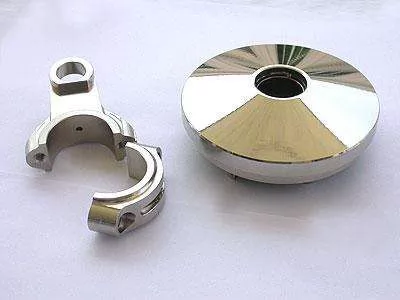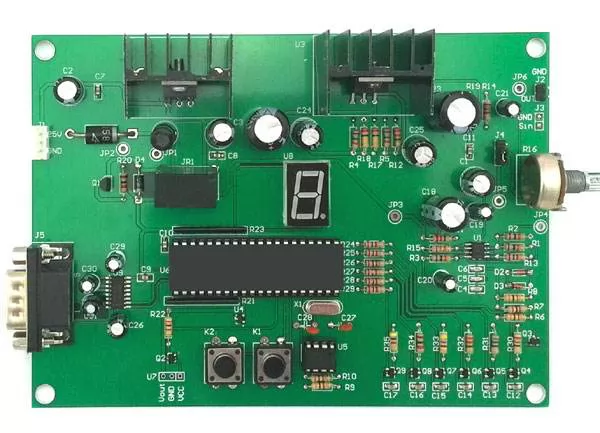Nickel electroplating
Electroplating or surface treatment involves applying a thin layer of metal or metal alloy. The purpose is to change the technical or physical properties of the surface of the items being plated - such as their electrical conductivity - or to improve their durability, appearance and performance.
The technology of nickel electroplating has been extensively developed, particularly during the last 50 years making it possible to efficiently produce a broad range of industrial coatings for both decorative and functional applications. Electroplated nickel is commercially important, with upwards of 150,000 tonnes being deposited worldwide each year. This widespread use reflects nickel’s beneficial properties and versatility as a coating material. A particular feature of electroplating is that, by modifying the composition of the electrolyte and the operating conditions, the properties and appearance of the nickel can be customized to specific needs.
Electroplated nickel is used extensively to enhance the utility, value and appeal of manufactured products such as consumer goods. Other nickel coatings are used to improve the physical properties such as resistance to wear, heat or corrosion. In many important applications, the nickel coating serves the dual purpose of providing a bright, attractive finish as well as imparting improved corrosion resistance or other functional properties.
The most notable recent developments in nickel plating have been the increased use of durable nickel-chromium coatings on plastics and aluminium components. Bright, satin, pearl and black coatings are frequently selected for automotive, motorcycle and commercial vehicle components as well as for taps/faucets and bathroom fittings, door and cupboard fixtures, metal furniture, appliances and consumer electronics.
Electroless nickel plating
In electroless nickel plating, a nickel coating is deposited on a surface using a controlled chemical process, or ‘reduction’, which is not based on an applied current. This is why electroless nickel coatings are extremely uniform, even when applied to items with a complex shape. The largest application is for hard disc drives for computers, while other examples are the metallising of plastics for electroplating, automotive brake cylinders, pumps, valves and other engineering products. Electroless nickel plating combines resistance to wear and corrosion with excellent adherence to all metals. This includes metals such as aluminium, which is increasingly important in the automotive and aerospace industry, due to its light weight.
Electroless nickel coatings are the first choice for protecting critical materials from corrosion in harsh environments, such as in automotive fuel systems, turbochargers, transmission parts and braking systems. In aircraft, electroless nickel is used for coating electrohydraulic servo valves, compressor blades, engine mounts, landing gear and other essential applications.
Applications
Nickel plating in the automotive industry
Plating and coating is particularly important for the car industry, where innovation in coating is advancing rapidly and for which nickel is indispensable for safety and longevity. Nickel plating on plastics and aluminium provides valuable benefits of aesthetics and durability. Other important plating techniques and electrolytic zinc-nickel and electroless nickel-plating. Zinc-nickel plating is particularly effective for corrosion protection, for example against salt spray and thus is in high demand for automotive bolts, fasteners and components. It is used in hydraulic systems, shafts in different engine parts, in parking brakes and in automatic gearboxes.

High performance coating for the automotive industry
The automotive industry is highly demanding when it comes to selecting the appropriate coatings for providing the highest possible protection against corrosion and wear. Zinc-nickel plating is used for those applications that require the highest corrosion and heat resistance with the lowest deposit thickness. This is why it is the material of choice for high-performance coatings of bolts, fasteners and brake parts in the automotive industry. Typically, a zinc-nickel coating contains between 12-15% nickel. Zinc-nickel can also be applied to aluminium and magnesium substrates, both of which are growing in importance for the automotive sector.
The aerospace industry has the highest technical requirements in terms of safety and reliability. The sector operates under strict standards for all materials, coatings and maintenance procedures for aircraft components, all of which are subject to detailed evaluation and testing before use.
Nickel plating in the aerospace industry
The unique functional properties of nickel-based plating make it important in aerospace applications, with excellent adhesion, corrosion protection, hardness, wear and erosion resistance as well as uniform layer thickness, even on complex components. This is why nickel, zinc-nickel and electroless nickel coatings are increasingly used in the aerospace industry for safety and performance.

Nickel plating in electronics
The world is increasingly dependent on electronics. These are particularly critical in applications where reliability is essential and failure would have dramatic consequences, such as in cars, aircraft, trains and the energy sector. Nickel plating is widely used in electronic components, such as connectors, contacts, microprocessors and integrated circuits, where it helps ensure functionality and reliability. As the requirements for such components are demanding, nickel plating plays a crucial role in the electronics industry. It provides corrosion resistance, offers high solderability, creates a barrier layer to avoid the migration of metals and also helps prevent 'whiskers' that can create short circuits.

Nickel plating provides a unique combination of corrosion and wear resistance. It can add brightness, lustre and appeal. It also provides excellent adhesion properties for subsequent coating layers, which is why nickel is often used as an ‘undercoat’ for other coatings, such as chromium.
Copyright statement: The content of the article is extracted from the network. If there is any infringement, please contact us to delete it!







.png)


.png) +86-574-83036520
+86-574-83036520 +86-574-83008051
+86-574-83008051 sales@innovaw.com
sales@innovaw.com

.png)

.png)
.png)
.png)

.png)
.png)
.png)











.png)

